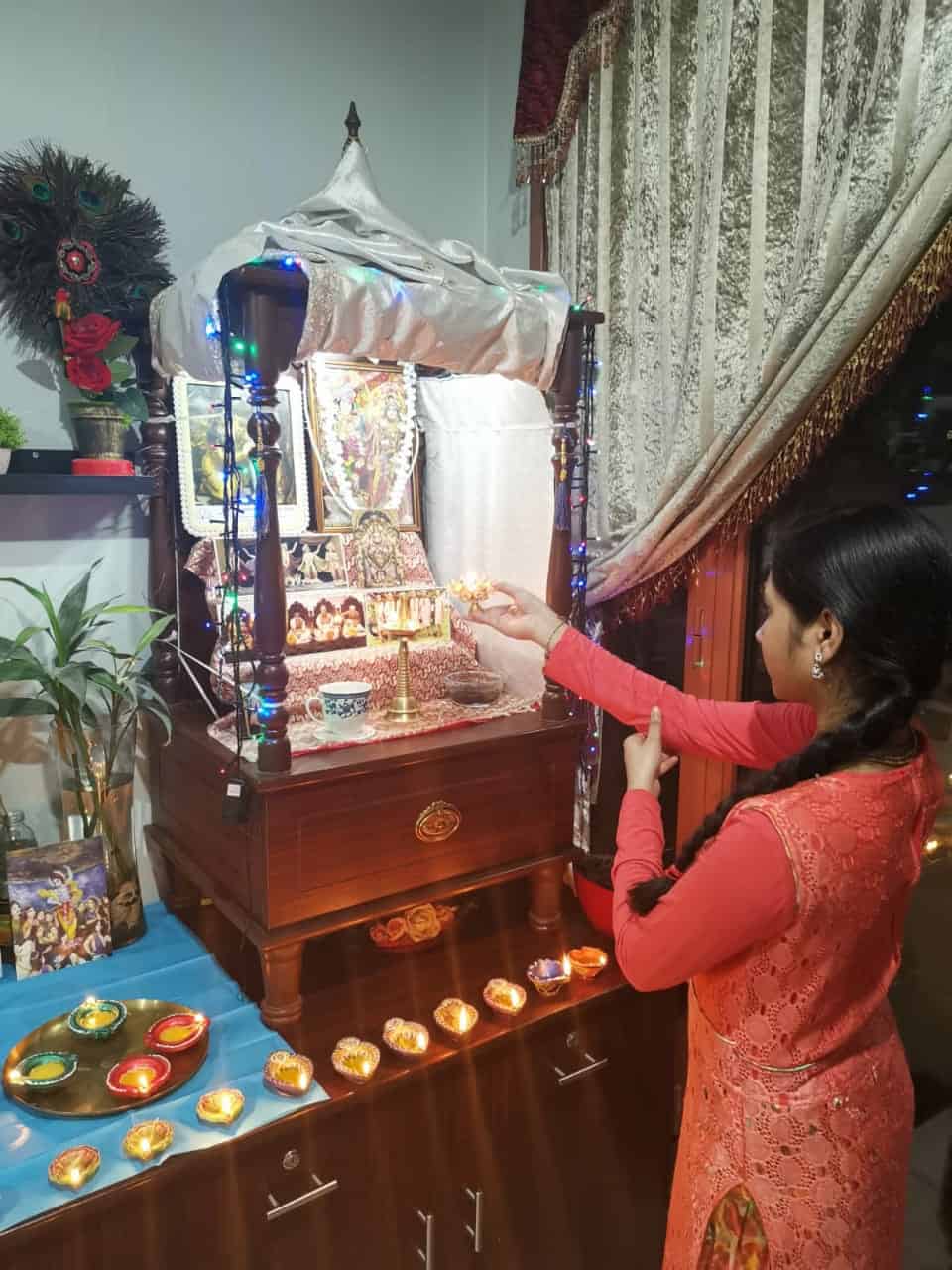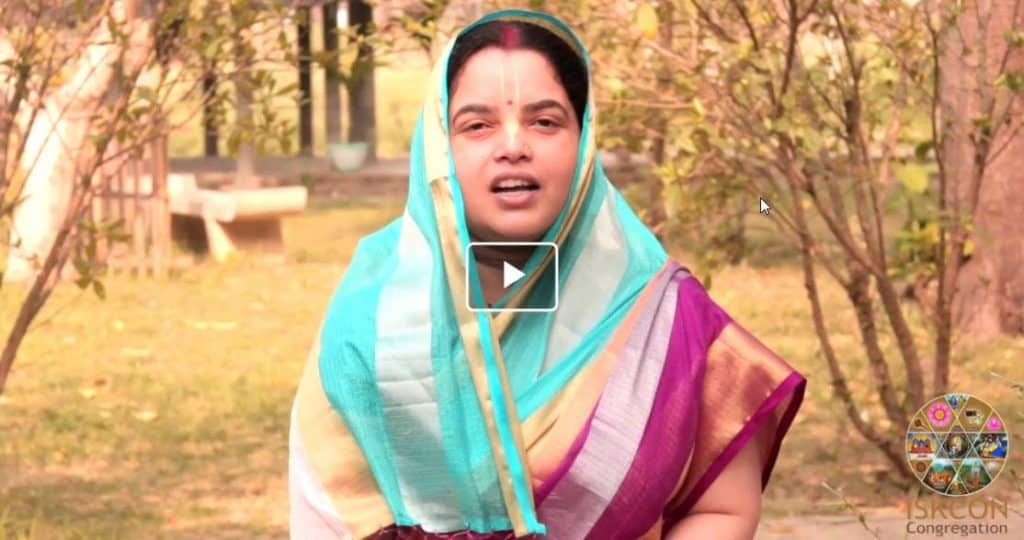“In devotional service, there is no loss or diminution,” Bhagavad-gita 2.40 teaches us, “and even a small service rendered in
devotional life is sufficient to save one from the greatest danger.” Engaging people in the simple act of offering a lamp to Krsna is, in itself, full of meaning, benefit and certainly powerfully impacts that soul’s destiny. At the same time, those who take the trouble (the burden of love) to organize the Damodara Program might wish to meditate on how to facilitate the
growth of that simple act of service into
something that grows in frequency and in
substance.
The first consideration could be on the
experience itself. For instance, we could
make sure that the lamps are not dripping
ghee or other oily substances and don’t leave the hand greasy (in that case we might want to provide ways for the devotees to wash their hands).
Secondly, we might want to ensure that the experience of being invited to offer the lamp is cordial, that the act is explained in a clear but succinct way, and that people don’t feel forced by overzealous devotees (who could appear as more interested in accumulating numbers than in the person).
Thirdly, we could consider what small gifts we could provide, what publications or souvenirs we can give to people to make
their experience more pleasant, more
memorable and equipping them more in
terms of information.
And so we could make a mental (or written) list of the do’s and don’ts in getting people to offer the lamp. After that, we could meditate on how to water the seed of the relationship with the devotees with some kind of follow-up. Of course, there is a variety of circumstances, widely differing from each other, but in some cases we could take people’s contact details (phone number, email or address, etc.) and make a point of getting back in touch with them at a later date, offering other devotional engagements.
Sometimes we compare this program with
“getting one’s foot in the door” an expression indicating completing the first step in a process, to ensure an initial opportunity and build on it later on. Wikipedia’s entry entitled “Foot-in-the-door technique” provides more insights on the psychological dynamics at play in the Damodara Program – besides its purely spiritual value.
“Foot-in-the door (FITD) technique is a compliance tactic that involves getting a
person to agree to a large request by first
having them agree to a modest request.
“The foot-in-the-door (FITD) technique
succeeds owing to a basic human reality
that social scientists call ‘successive approximations.’ Essentially, the more a subject goes along with small requests or
commitments, the more likely that subject
is to continue in the desired direction of attitude or behavioural change and feel obligated to go along with larger requests.
“FITD works by first getting a small ‘yes’
and then getting an even bigger ‘yes’ . . .
The principle involved is that a small
the agreement creates a bond between the
requester and the requestee. Even though
the requestee may only have agreed to a
trivial request out of politeness . . . When
a future request is made, the requestee will feel obliged to act consistently with the earlier one.”
And so we should meditate: What is the next request we can make? What is the next service, involvement we can offer? What is the next step in this soul’s development of Krsna-bhakti? How could this a small gain in the building of the relationship with the devotees be concretized into something more solid, more involving? I will let your creativity – and your analysis of your situation – take over from here.
By Kaunteya Das



